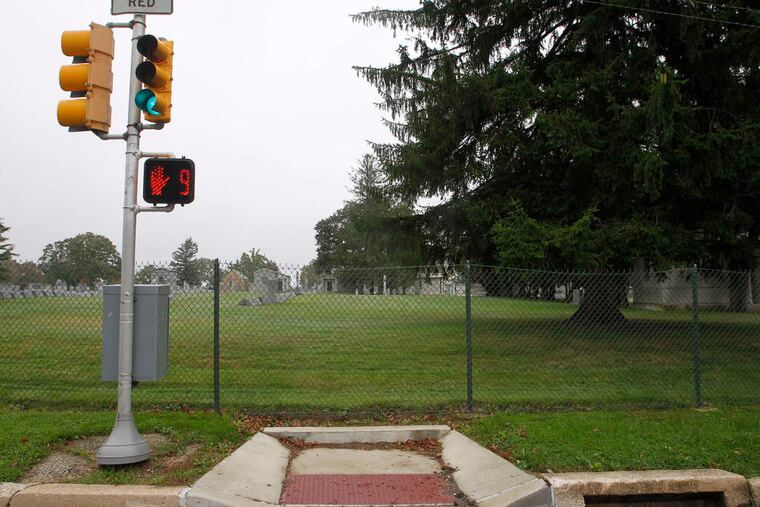Stu Bykofsky: Stupid ramp tricks: Curb your enthusiasm
LAST MONTH'S column on rehabbing handicapped ramps throughout the city was followed by howls of outrage about the cost, hilarity at the placement of some of them and photos from citizens showing some really questionable ramps.

LAST MONTH'S column on rehabbing handicapped ramps throughout the city was followed by howls of outrage about the cost, hilarity at the placement of some of them and photos from citizens showing some really questionable ramps.
Because of changes in federal regulation, Philadelphia (and every other city, town and hamlet in the nation) must install upgraded handicapped ramps meeting new guidelines, including plates with truncated domes that look like bumps the size of elevator call buttons. Also called "tactile warning strips," they are supposed to let visually impaired people "feel" that they are approaching an intersection. I would think the ramp's incline is enough warning, but apparently not.
About 1.3 million Americans are legally blind, with others having vision problems of varying severity, according to the American Foundation for the Blind.
Curbs were cut starting in the '90s to make life easier for people in wheelchairs. While costly, they were clearly necessary. Since 1995, the city has installed 4,958 ramps at 826 intersections, according to Streets Department Deputy Commissioner David Perri. The cost of upgrading all of Philly's ramps will be $858 million. At the current rate, that project will take 40 years.
That's just Philly, where it costs an average of $7,500 to do one ramp in Center City, and each intersection must have eight ramps, two on each corner, for a $60,000 total. Multiply that by every U.S. intersection and the cost turns into trillions.
Wouldn't it be more cost-effective - and humane - to give every sight-impaired American a seeing-eye guide dog?
Training a guide dog costs $42,000, according to Guide Dogs of America. So, one guide dog costs less than the cost of redoing one Center City intersection.
But, Perri notes, the ramps would still have to be replaced for those in wheelchairs.
Repaving the ramps - a far more complex job than you might imagine - soaks up 65 percent of Philadelphia's $20 million annual paving budget.
This seems like a bitter joke, as does the location of some of the ramps, such as what you see here:
* At Krewstown Road and Algon Avenue (top, left), in the Northeast, where does the person in a wheelchair go? Perri explains that there is a 60-foot gap in the sidewalk between a bus stop and the ramp. If the sidewalk was there, it would make some sense. But the sidewalk is not there.
* This ramp at Ivy Hill Road and Cheltenham Avenue (top, right), in East Mount Airy, is a classic ramp to nowhere.
* Welcome to Fantasy Island. This useless ramp (bottom, left) is at Verree Road and Tustin Street, in the Northeast.
* Huntingdon Pike and Moreland Road, in Lower Moreland Township (bottom, right), has the mandatory two ramps, but no exit for anyone in a wheelchair.